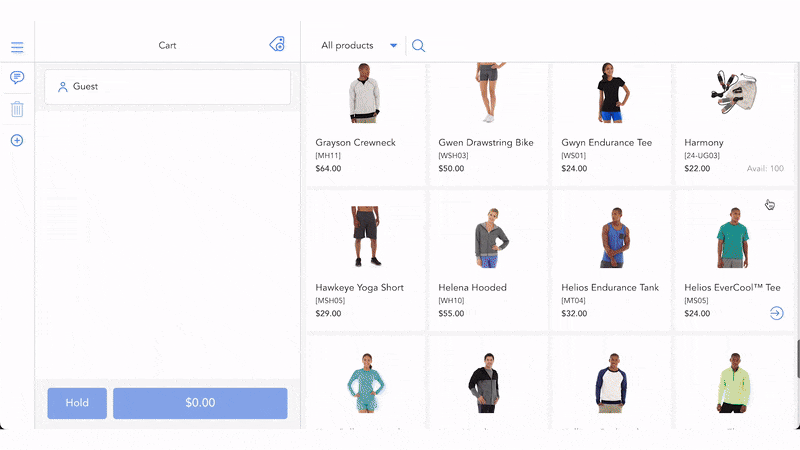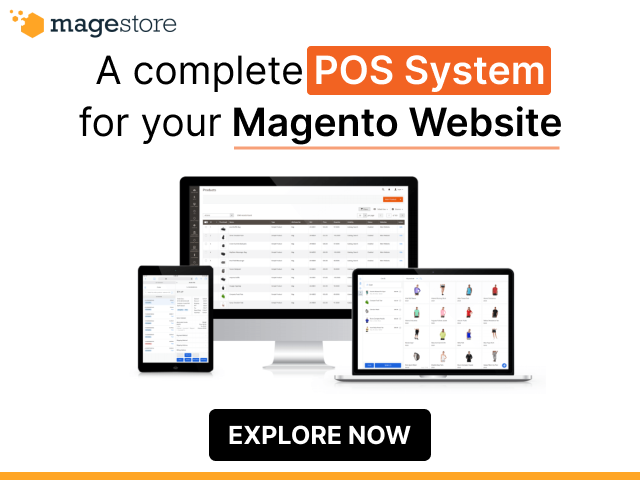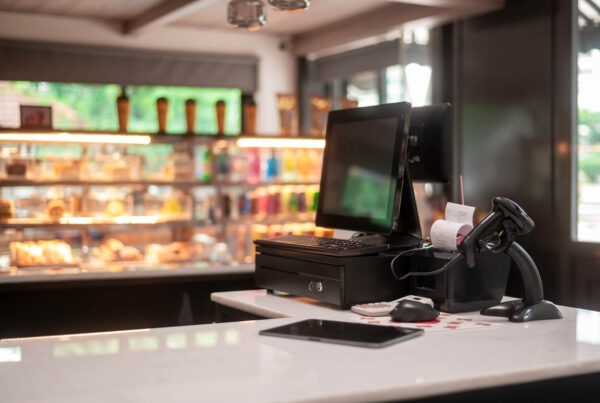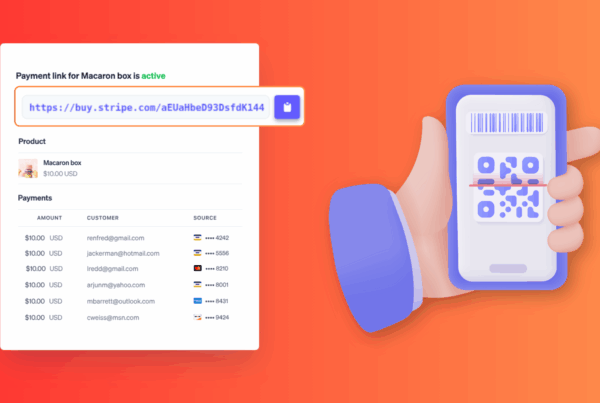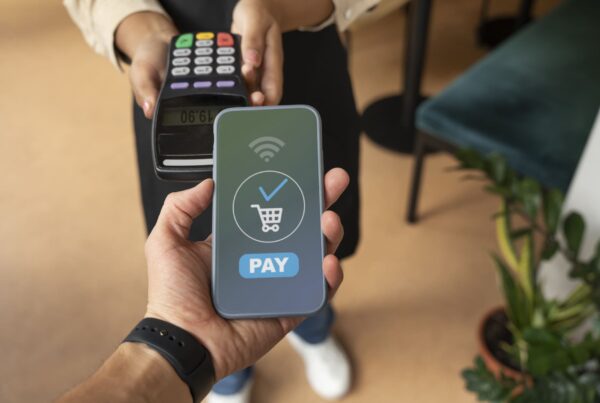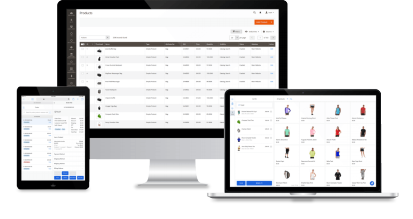eCommerce POS is essential as it connects and creates a communication bridge between your 2 main business channels: your online eCommerce platform and offline POS system. This article will dive into the definition, benefits, and how eCommerce POS works, offering valuable insights to find the best fit eCommerce POS systems for your business.
What is an eCommerce POS?
An eCommerce POS is a point-of-sale system built to work with eCommerce platforms, making it easier for businesses to manage both online and in-store sales. Examples include Magestore’s Magento-native POS for Magento or Shopify POS for Shopify. Standalone POS systems like Lightspeed POS or Square POS qualify as eCommerce POS only when used with their own eCommerce platforms.
Take a look at the definitions of an eCommerce native POS and a standalone POS with an eCommerce module to better understand their differences:
eCommerce native POS | Standalone POS with eCommerce module |
It is a POS system natively built to work with the eCommerce platform. All the data from the POS are automatically synced to the eCommerce platform’s backend. | It is an independent system that does not require integration with other platforms and has its own data storage. It can be seen as an eCommerce POS when used with its built-in eCommerce module. |
The eCommerce POS helps maintain a single, unified inventory and customer database across all sales channels. With this system, businesses can offer omnichannel shopping options, like buy online, pick up in-store, or in-store returns for online purchases, ensuring a smooth and consistent customer experience at every touchpoint.
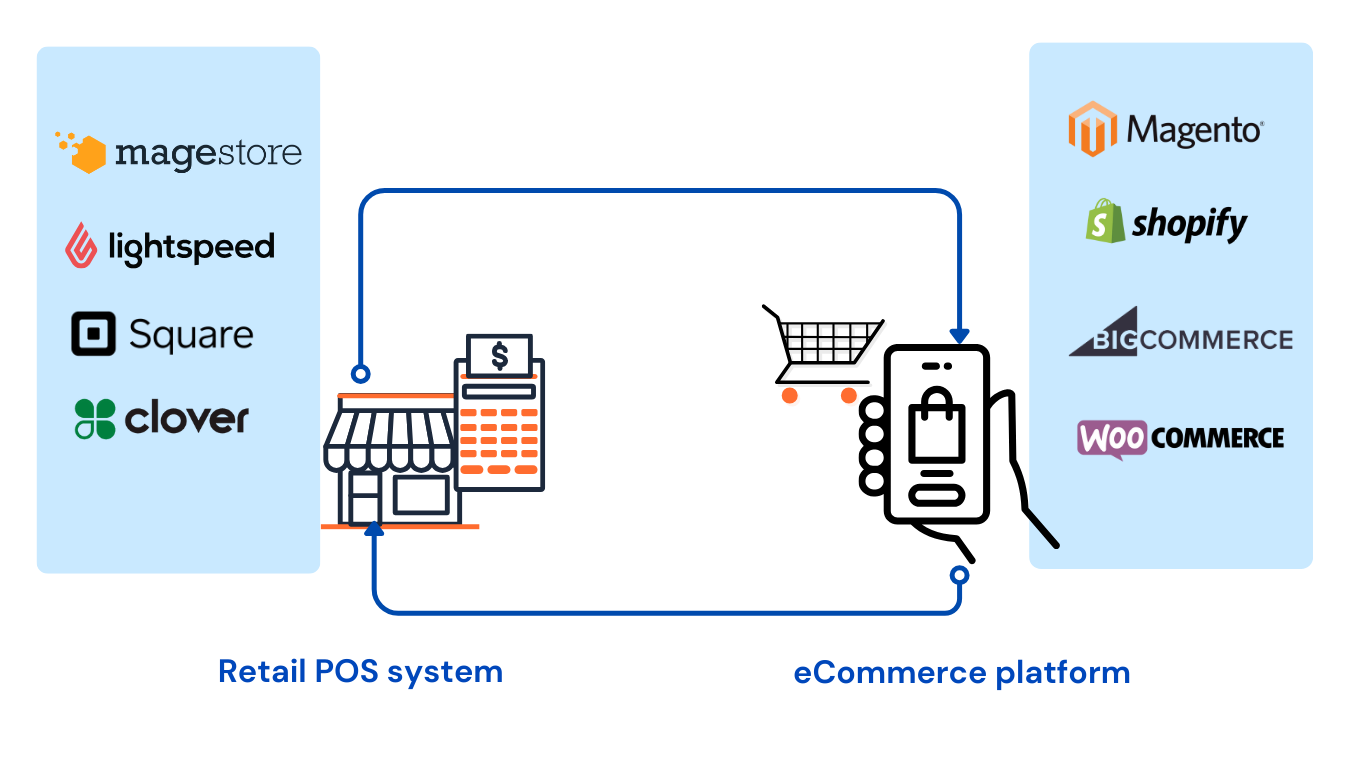
>>> Might you like: What is Magento POS? Differentiating native and non-native solutions
How does an eCommerce POS work?
In general, an eCommerce POS manages retail processes while synchronizing data between online and offline channels. Find out its role in detail across various functionalities:
Inventory Management
Inventory is tracked in a single system that updates stock levels across channels in real time. Whether a product is sold in-store or online, the shared database adjusts the stock count instantly to prevent overselling.
Order Processing
All orders—online and in-store—are managed in the same backend. For example, an online order can trigger a stock adjustment and appear in the POS as a pending fulfillment, enabling in-store pickup or shipping.
Customer Data
Customer profiles are centralized. Purchases from any channel update the same database, allowing the system to maintain a complete purchase history and enable cross-channel loyalty programs.
Payment Handling
Payments processed at the POS or online flow through the same payment provider, ensuring unified financial records. Refunds or adjustments sync across both platforms.
Real-Time Sync
The POS and eCommerce platforms communicate via APIs and a cloud-based system, ensuring real-time data updates. If offline, local data is synced once reconnected. This unified mechanism provides a seamless omnichannel experience for retailers and customers.
How to start using an eCommerce POS
There are many approaches to start using an eCommerce POS. To choose the suitable method, you’ll need to evaluate your current state by asking yourself a simple question: Have you already had an eCommerce website or POS solution in place?
Based on your answer, below are the 3 scenarios and how to start using an eCommerce POS:
1. You’ve already had a POS, but not a website

In the case of already having a POS system, you should consider these situations:
- If your current POS is outdated with limited eCommerce functionality, consider changing to another native POS system of the eCommerce platform that you choose to use
- If your current POS is a specific eCommerce native POS or a standalone POS with a powerful eCommerce module, consider using its built-in eCommerce system
- If your current POS is a standalone POS without an eCommerce module, consider using a connector to integrate it with your chosen eCommerce platform or switch to an eCommerce native POS for better compatibility
Here are some key points to consider if you decide to use a standalone POS with a connector to integrate with your eCommerce platform:
- Data integration issues: Even with the ongoing API and connector updates, the accuracy of data integration with a connector cannot match that of a native solution. Some data problems can arise during the integration, such as data inconsistencies, data missing, data loss, or even data leakage.
- Data silos: In some specific cases, using connectors may result in data silos, requiring merchants to access and manage data across multiple systems rather than in a unified view.
- Connector fees: Some eCommerce platforms offer free connectors, while others may charge a fee for their use. These usage and maintenance connector fees are the expenses you should be aware of.
After having the POS solution for your business, here are the things to keep in mind to ensure a smooth POS operation:
- Choose a theme: Some eCommerce platforms allow you to create your theme, while others offer preloaded themes and require customization for changes to match your aesthetic and brand identity.
- Synchronize your payment gateway: Set up or integrate your POS system’s payment solution providers with your online website. And note that online sales processing fees are often higher than in-store card transactions.
- Import customer data and inventory: This process can be quick and accurate if you use a data migration service to transfer loyalty points and inventory from the POS system to your online site.
- Set up shipping: Make sure that your chosen eCommerce platform supports or can integrate with your shipping suppliers and shipping fee.
2. You’ve already had a website but not a POS

If your business starts with an online website and plans to expand to brick-and-mortar stores, things become relatively easy when starting with the native POS solution for this eCommerce platform.
- Search for POS software that is compatible with the eCommerce platform you are using.
- Clearly define the business requirements that you expect the POS to serve. Compare the price and other associated fees to choose the ideal one.
The roadmap checklist is similar to scenario (1). However, there are a few other things that you need to evaluate when choosing a POS system.
- Payment processor integration: Make sure your POS is compatible or can integrate your existing payment providers. Switching to a new processor is always an undesirable decision for many businesses and their customers.
- Available integration and add-ons: A sound POS system usually has many advanced features like inventory tracking and advanced reporting.
- Curbside pickup: Customers increasingly love the convenient curbside pickup option, especially during the Covid-19 pandemic for safety and contactless payments. Some POS systems support this option. A plus point to boost your sales.
3. You have neither a POS nor a website

Whether you’re a startup or a medium to large enterprise, it’s important to thoroughly research POS for eCommerce solutions to find the best fit for your business. To help, we’ve compiled a list of POS systems with powerful eCommerce platforms that might be worth exploring:
eCommerce platform | Recommended POS to consider | Key features | Trial and Pricing plans | Best for |
Magento |
|
| A highly customizable solution designed for medium to large enterprises, requiring advanced technical expertise. | |
Shopify | Shopify POS |
|
- Lite: Free on every Shopify plan - Pro: $89/month/location | Cost-effective, plug-and-play solutions designed for startups and small businesses prioritizing online sales. |
|
- Lite: $15/month - Standard: $50/month/location | |||
Square | Square POS |
|
| An affordable solution with POS and integrated payments. While its eCommerce capabilities are less advanced than some others, it is best suited for merchants prioritizing brick-and-mortar sales. |
WooCommerce | FooSales POS |
|
- Single domain plan: $19/ month (billed annually) - Multiple domain plan: $55/ month (billed annually) | An affordable solution for small to medium-sized businesses. |
Prestashop | Rock POS |
|
- 6 months: € 40.00 - 12 months: € 70.00 - 24 months: € 130.00 | Best suited for small to medium-sized businesses in specific European countries, including England, France, Spain, Italy, Poland, Germany, the Czech Republic, Denmark, the Netherlands, Portugal, Russia, Serbia, etc. |
How much does it cost to use an eCommerce POS?
The cost of an eCommerce POS is primarily determined by your choice of solution and service provider (free, subscription, or one-time payment). Whether you select an eCommerce-native POS, a standalone POS with an eCommerce module, or a standalone POS integrated with an eCommerce platform via a connector, each option will dictate the associated fees.
Typically, an eCommerce native POS and a standalone POS with an eCommerce module eliminate the connection fees required to link the POS and eCommerce platform since they come pre-integrated. Below is a breakdown of these fees:
Costs | Standalone POS integrated with an eCommerce platform via a connector | Standalone POS with eCommerce module | eCommerce native POS |
eCommerce platforms pricing plan | |||
POS system registration fee | |||
Cost to integrate POS with eCommerce platform | |||
Development costs for additional integrations or features | |||
Payment processing fee |
10 must-have features to look for an integrated eCommerce POS system
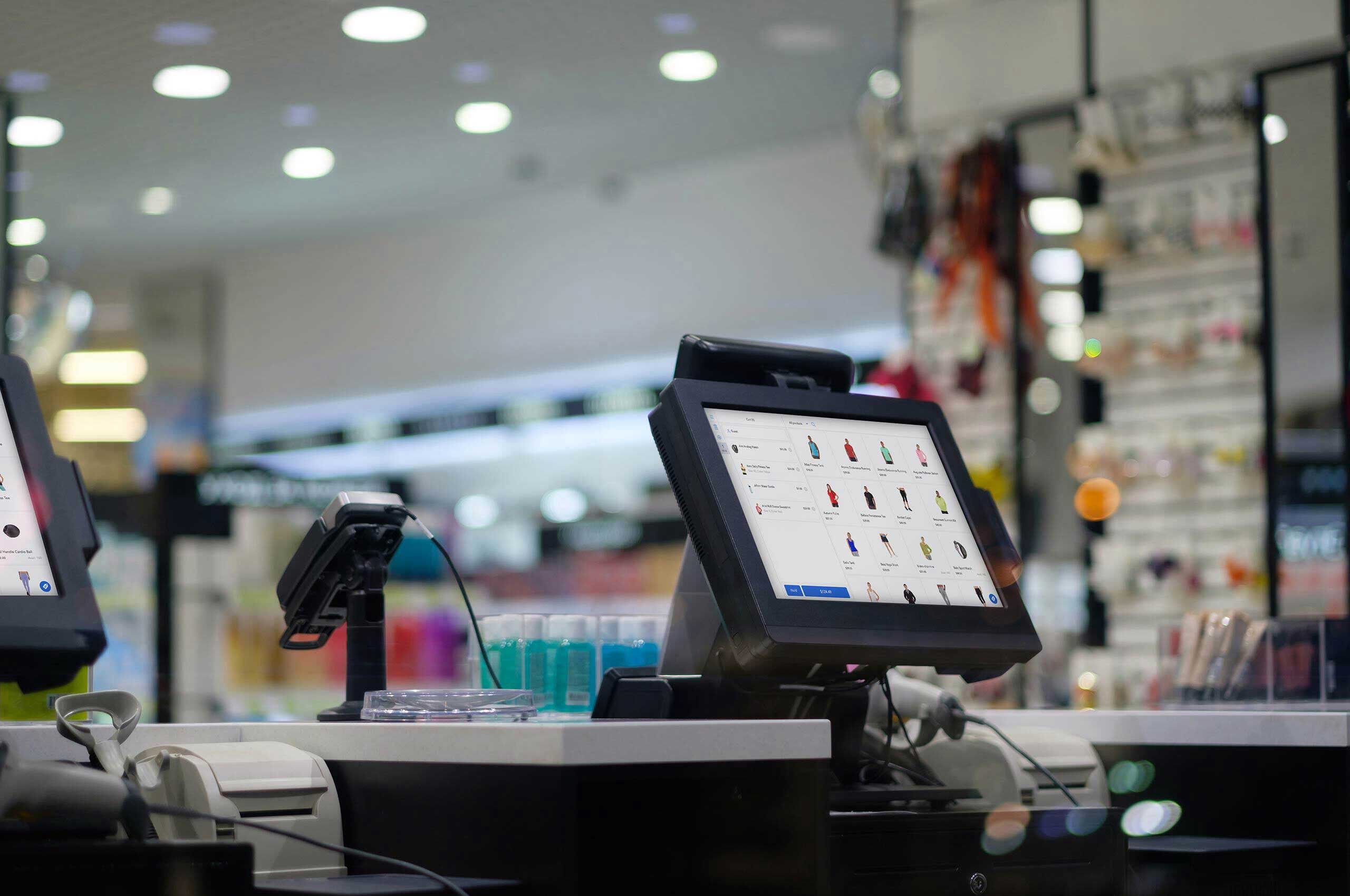
There are 10 key features you should consider when looking for an eCommerce integration with POS:
- Inventory management integration
- Payment integration for online and mobile payments like contactless card processing methods and Apple Pay
- Customer management
- BOPIS or curbside delivery
- Returns and exchanges
- Promotion and discount
- Loyalty programs (reward points, store credit, and gift cards)
- Email marketing integration
- Omnichannel fulfillment
- eCommerce sales reporting
Why do I need an eCommerce POS?
According to a study by Harvard Business Review, customers will spend 13% more in physical stores if they’ve conducted prior online research via the brand’s websites. It means that customers who interact via multiple channels tend to spend more in retail stores.
Thus, it’s critical to provide customers with a seamless buying journey from offline to online to meet their growing expectations. Below are some specific benefits.
1. Maintain accurate inventory across channels

Efficient inventory management across multiple channels is vital to every business owner. POS and eCommerce integration allows you to have real-time inventory updates across both online and offline stores, ensuring accurate inventory data in a multichannel environment.
- Automatically update inventory with every sales transaction across all channels
- Track which products may need promotion and which products are hot to order more
- Restock the right item at the right time and in the right place
- Transfer stocks between warehouses and locations
- Avoid out-of-stock and overstock situations to optimize your inventory holding price
You can automate inventory management processes such as:
- Control inventory levels to ensure timely procurement
- Set minimum inventory level according to SKU
- Automated order generation for suppliers with auto-replenishment
2. Eliminate manual data entry

Manual data entry, reconciliation, and synchronization are always error-prone and time-consuming. Therefore, another vast added value of integrating an eCommerce website with an EPOS system is eliminating manual data entry like:
- Synchronizing order information from in-store and online orders
- Manage customer, order, and product information in one place
- No need to update information or reconcile data between channels
An eCommerce POS reduces your precious time and effort so you can focus on your business.
3. Offer cross-channel promotions and discounts

Manually entering the discount at the POS machine can slow down the customer registration process and increase the risk of fraud. Thus, it’s crucial to have a retail system that seamlessly integrates eCommerce and POS to:
- Streamline loyalty program
- Increase customer shopping experience
- Boost sales and revenue
It provides different strategies to expand your customer base and encourage customers to shop through both channels like:
- Set up and apply discounts across online and offline channels
- Suggest promotions and coupons automatically when checkout on POS and websites
- Accumulate and use loyalty points for online and offline orders
- Purchase and redeem gift cards at both online and offline stores
4. Leverage better customer data and insight

POS and eCommerce integration means you centralize all your customer data in one place.
- Display a consolidated view of shopper behavior across both channels
- Provides more precise insights into your customer preferences and shopping habits
Because customers prefer a consistent experience and interaction across all channels, your retail can improve customer relationships through personalized promotions and offers:
- Tailored marketing proposals based on purchase history
- Run multi-channel promotions (discounts, rewards cards, and other loyalty programs)
5. Enable omnichannel order fulfillment
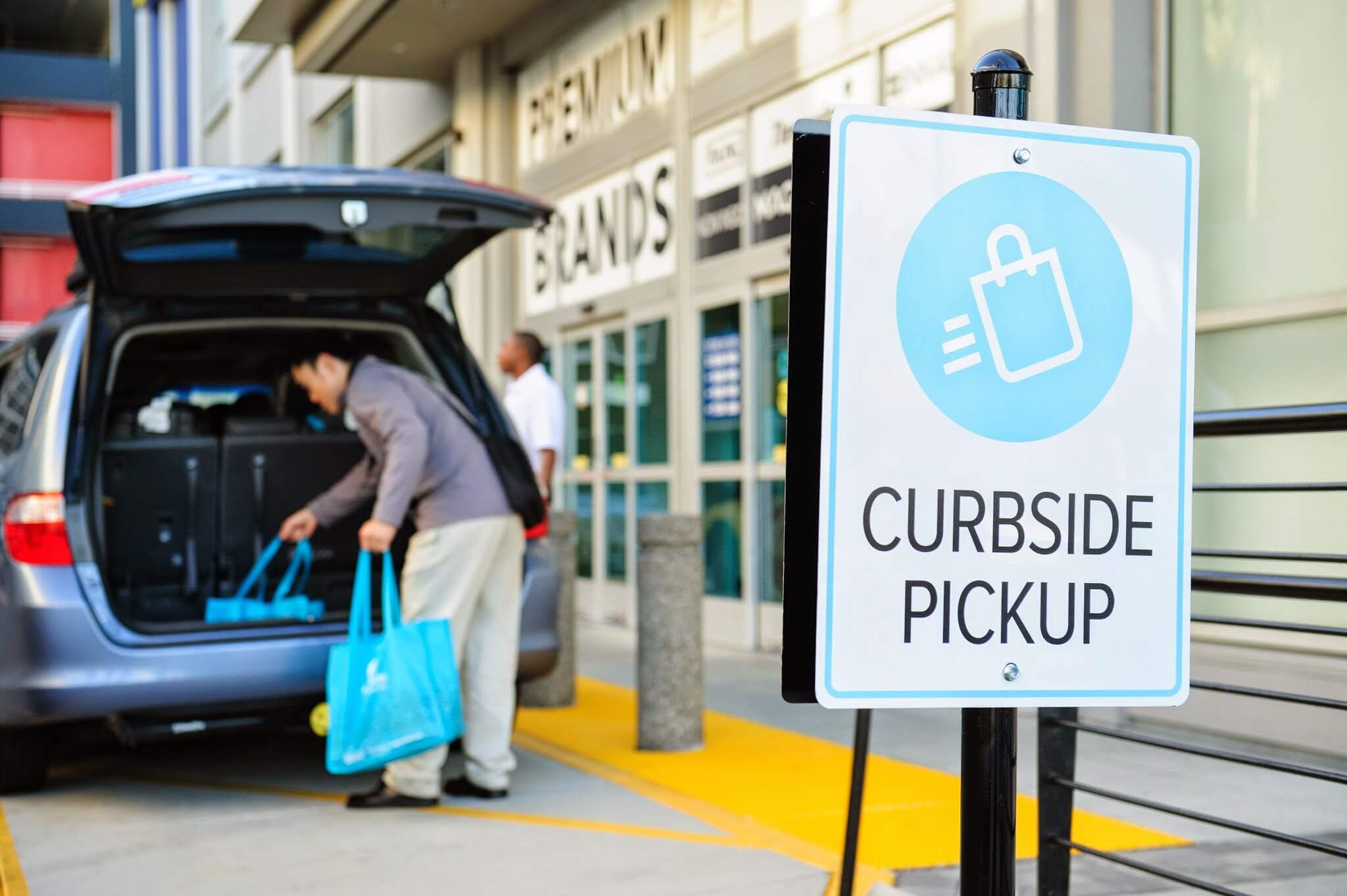
Customers today prefer an easy and fast shopping experience. Most expect delivery within the same day or even hours. Big retailers like Walmart use their retail stores to fulfill online orders:
- Treat each store as a fulfillment center
- Added a store locator on the website that shows stock availability in each store
- Choose stores that are conveniently located on customer routes
- Forward online orders to fulfillment centers in brick-and-mortar stores automatically
- Continue the process of online orders at the in-store POS system
If you operate a click-and-collect retail business or online purchase — pick up in-store (BOPIS) model, customers will want to determine which store has the item to place an order and pick it up from there. You can implement this model when having POS integration with eCommerce. This:
- Allows your customers to purchase products online and receive them in-store or even by the roadside
- Allows customers to return products purchased online at the store
The customer will have more comfortable delivery options and receive goods faster. Retailers can reduce shipping costs and improve customer satisfaction.
>> Let’s explore top 9 eCommerce fulfillment solutions in 2025 to run omnichannel fulfilling with ease.
6. Improve customer experience
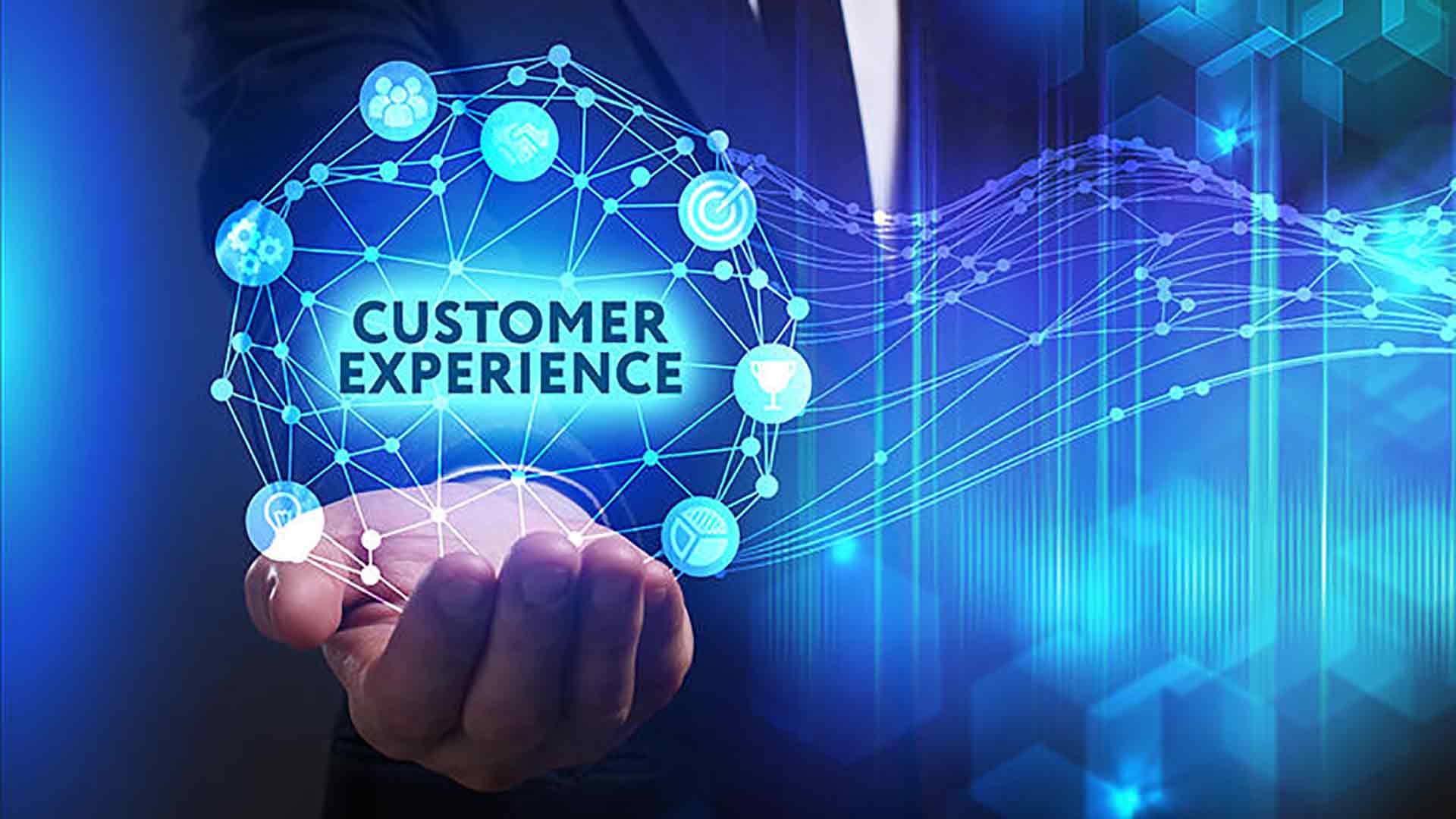
Integrated eCommerce POS solutions solve various business needs in real-time and increase customer satisfaction over their omnichannel touchpoints. It connects your online store to your POS system and creates a seamless customer experience through:
- Different payment methods with POS software
- Seamless online ordering
- Integrated omnichannel marketing and loyalty program
Starting POS website integration is just the beginning. Think about the bigger picture when smoothly bringing in accounting, shipping, and ERP systems.
At Magestore, we focus on making sure our POS for eCommerce (Magento and Shopify) and RMS work with different software and hardware, making your whole business run better. Curious about what’s possible? Check out the seamless integration that Magestore offers:
Conclusion
An eCommerce POS system brings great benefits from automating processes and synchronizing data between 2 channels. It saves manual labor, provides in-depth reports and analysis for you to make data-driven decisions, and enhances the customer experience, thereby increasing your revenue.
However, take your needs into account before choosing the integration method. In addition, you can reduce total integration costs by choosing systems that integrate natively between POS and eCommerce. As a result, they’ll be guaranteed options with seamless integration and a reliable system in the long run.
If you’re looking to connect your Magento website with your offline stores, Magestore POS can help you sync data between your channels in real time. You can book a free consultation with us, and together we’ll build a solution that works for your business.
FAQs
1. What is POS in eCommerce?
A POS for eCommerce is a point of sale system integrated with an eCommerce platform, enabling merchants to manage sales across online and offline stores: process payments, sync omnichannel data (products, orders, and customer information), oversee inventory, track staff performance, and access reports and analytics.
2. What is POS vs eCommerce transaction?
eCommerce transactions are transactions of buying and selling products or services online via computers, mobiles, or other telecommunication devices and equipment.
POS transactions take place when customers make payments at a cash counter or online store in exchange for products or services.
3. What are the 5 types of POS systems?
They are on-premise POS, cloud-based POS, web-based POS, mobile POS, and omnichannel POS. Learning about different types of POS helps you consider and choose the best POS type for your business.
4. What does POS mean?
POS stands for Point of Sale. Beyond its primary function is processing payments, a POS system enables merchants to manage many other tasks related to products, orders, inventory, taxes, and deliveries. Some popular POS systems are Magestore POS, Shopify POS, Lightspeed POS, and Square POS.
5. What is the difference between POS and EPOS?
EPOS and POS systems are essentially the same. Many people think that ePOS implies electronic POS or a modern POS system while POS system doesn’t. However, in the retail industry nowadays, we should understand that both definitions are similar, mentioning an advanced POS system (including POS hardware and software) that can help retailers solve all pain points relating to retail operations from online and offline checkout process, inventory management to customer loyalty management, reporting and integration capabilities.
If it is necessary to differentiate, EPOS and advanced POS systems are efficient solutions for every business with more complex needs while traditional POS only functions as managing in-store checkout processes.
6. What are POS examples?
There are several POS examples in the market, including standalone options such as Lightspeed POS and Square POS, or eCommerce-native systems like Shopify POS and Magestore POS.
7. Can POS be integrated with ERP?
Yes, you can integrate your POS with ERP. A POS and ERP integration ensures all your business data is accurate and up to date. It helps reduce human error from manual data entry across your company and also eliminates delays in those updates.
8. Do you need a POS system for online business?
Not necessarily. If you only sell online, you don’t need a POS system. A POS system becomes valuable when your business operates both online and offline, creating a seamless omnichannel selling experience.
9. What is POS integration API?
This is an API to integrate your point of sale with an eCommerce platform, marketplace, or other business software like ERP.
10. Can I transfer data from my old POS system to a new POS?
Yes, definitely. You can transfer your data from the old POS to the new one. One critical decision is to define which information to migrate to your new POS.
The most important POS data includes inventory, orders, customers, and purchasing.

